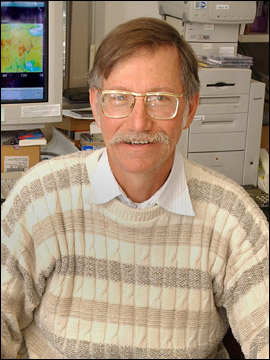
A unique cloud study funded by the Atmospheric System Research program received coverage in the July 2017 issue of the Bulletin of the American Meteorological Society (BAMS). The research examined cloud structure through high-resolution photography from the ground.
It’s not the first time this work—highlighted in BAMS’ “Nowcast: News and Notes” section—has received high-profile recognition. In April, the American Geophysical Union publication Eos spotlighted the research, which took place at the Atmospheric Radiation Measurement (ARM) Facility’s Southern Great Plains (SGP) atmospheric observatory.
Published in March by Journal of Geophysical Research: Atmospheres, the paper reported use of a Fujifilm FinePix S1 digital camera to capture the sky directly above the SGP site in July and August of 2015. In a time series of images, the camera caught a cloud cluster 2 kilometers above the surface at 4-centimeter resolution—up to five orders of magnitude higher than satellites. Looking pixel by pixel, researchers discovered significant variation in the clouds’ structure, including differences in the extent to which light is scattered or transmitted through thin clouds.
Stephen E. Schwartz of Brookhaven National Laboratory authored the paper with Dong Huang, a former Brookhaven colleague who now works at Science Systems and Applications Inc. in Maryland, and Daniela Viviana Vladutescu of the New York City College of Technology (City University of New York).
“We are still working on analysis from our initial deployment in July and August 2015, as well as looking for other opportunities for future deployments,” Schwartz says. “In the meantime, we are excited about the ability of this camera and the analysis scheme we developed to determine optical depth of very thin clouds—clouds that are radiatively quite important, but not well, or even at all, represented in climate models.”
# # #
This work was supported by the U.S. Department of Energy’s Office of Science, Office of Biological and Environmental Research as part of the Atmospheric System Research Program.
BAMS is Latest Publication to Spotlight ASR-Supported Cloud Photo Research
Published: 18 September 2017

